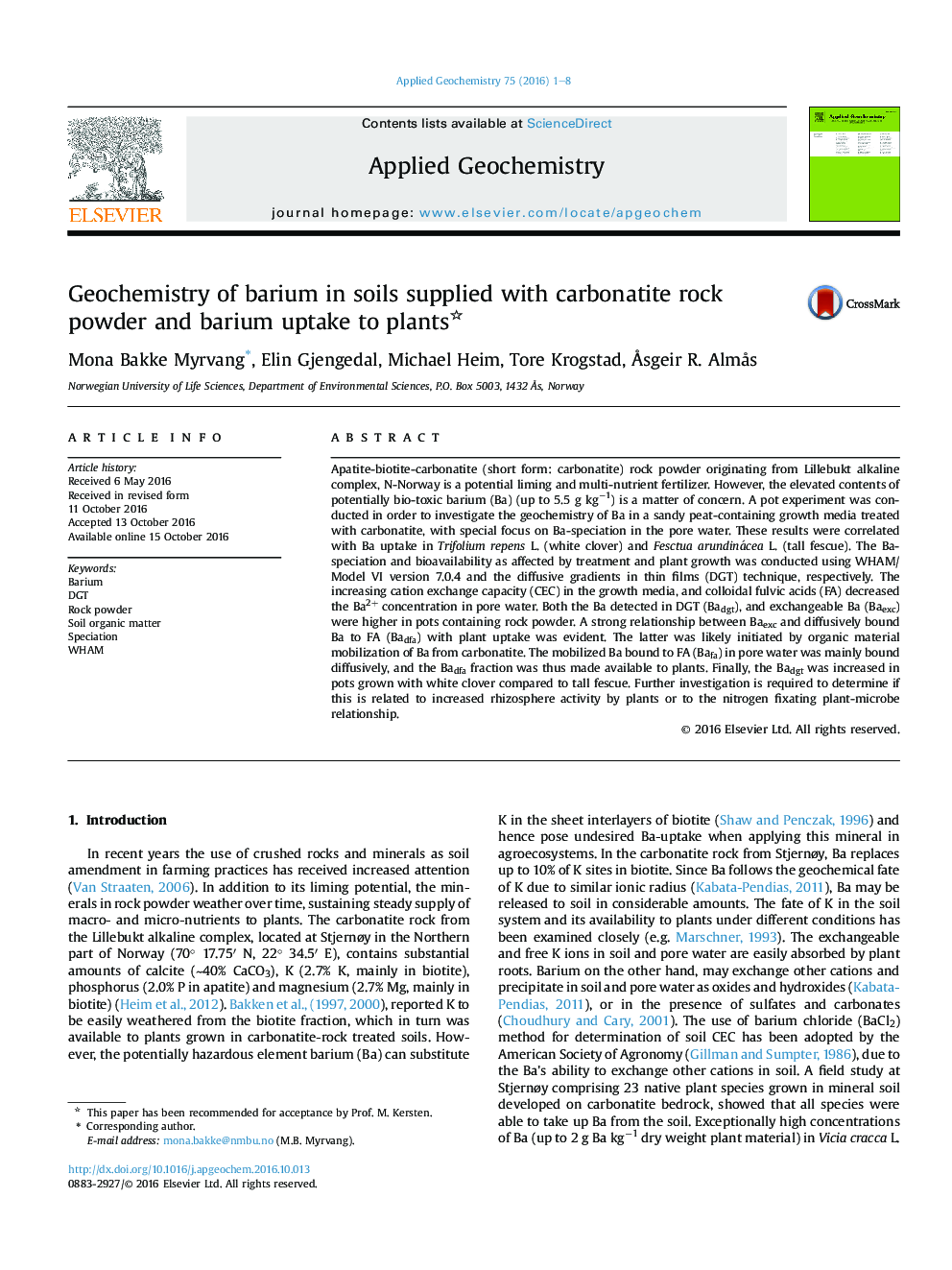| کد مقاله | کد نشریه | سال انتشار | مقاله انگلیسی | نسخه تمام متن |
|---|---|---|---|---|
| 5752636 | 1620216 | 2016 | 8 صفحه PDF | دانلود رایگان |
- Peat organic matter enhances the release of barium from mineral soils.
- Exchangeable barium is a major source to barium uptake by plants.
- Barium bound to colloidal fulvic acids is a major source to barium uptake by plants.
- Rhizosphere activity is suggested to increase Ba release from carbonatite.
Apatite-biotite-carbonatite (short form: carbonatite) rock powder originating from Lillebukt alkaline complex, N-Norway is a potential liming and multi-nutrient fertilizer. However, the elevated contents of potentially bio-toxic barium (Ba) (up to 5.5 g kgâ1) is a matter of concern. A pot experiment was conducted in order to investigate the geochemistry of Ba in a sandy peat-containing growth media treated with carbonatite, with special focus on Ba-speciation in the pore water. These results were correlated with Ba uptake in Trifolium repens L. (white clover) and Fesctua arundinácea L. (tall fescue). The Ba-speciation and bioavailability as affected by treatment and plant growth was conducted using WHAM/Model VI version 7.0.4 and the diffusive gradients in thin films (DGT) technique, respectively. The increasing cation exchange capacity (CEC) in the growth media, and colloidal fulvic acids (FA) decreased the Ba2+ concentration in pore water. Both the Ba detected in DGT (Badgt), and exchangeable Ba (Baexc) were higher in pots containing rock powder. A strong relationship between Baexc and diffusively bound Ba to FA (Badfa) with plant uptake was evident. The latter was likely initiated by organic material mobilization of Ba from carbonatite. The mobilized Ba bound to FA (Bafa) in pore water was mainly bound diffusively, and the Badfa fraction was thus made available to plants. Finally, the Badgt was increased in pots grown with white clover compared to tall fescue. Further investigation is required to determine if this is related to increased rhizosphere activity by plants or to the nitrogen fixating plant-microbe relationship.
Journal: Applied Geochemistry - Volume 75, December 2016, Pages 1-8
